 2012 Mitsubishi Outlander III Dimensions, Size & Specs
2012 Mitsubishi Outlander III Dimensions, Size & SpecsMeasurements of the 2012 Mitsubishi Outlander III, engineered for optimal performance and comfort
| Dimensions | |
|---|---|
| Length: | 4655-4665 mm183.3-183.7 in15.3-15.3 ft |
| Width: | 1801 mm70.9 in5.9 ft |
| Width (Opened Mirrors): | 2120 mm83.5 in7.0 ft |
| Height: | 1680 mm66.1 in5.5 ft |
| Ground Clearance: | 190-216 mm7.5-8.5 in0.6-0.7 ft |
| Trunk Capacity: | 145-463 liter5.1-16.4 cu ft |
| Trunk Capacity (Max): | 986-1792 liter34.8-63.3 cu ft |
| Weight Specifications | |
| Curb Weight: | 1380-1810 kg3042-3990 lbs |
| Maximal permitted Weight: | 2175-2310 kg4795-5093 lbs |
| Roof Load: | 80 kg176 lbs |
| Tire Specifications | |
| Rims Sizes: | 16-inch rims:
|
| Tire Sizes: |
|
The Mitsubishi Outlander III, produced between 2012 and 2015, is a compact SUV designed to offer both versatile performance and practical space. This generation of the Outlander has a length ranging from 4655 to 4665 mm (183.3 to 183.7 inches), providing a balanced footprint ideal for urban and off-road use. With a width between 1800 and 1801 mm (70.9 to 70.9 inches) and 2120 mm (83.5 inches) including opened mirrors, the vehicle has a broad stance, which contributes to stable handling and road presence. The height of the Outlander III is approximately 1679 to 1680 mm (66.1 to 66.1 inches), giving a comfortable headroom for passengers and an elevated driving position typical of SUVs.
Weight-wise, the Outlander III's curb weight varies from 1380 to 1810 kg (3042 to 3990 lbs), depending on trim and configuration, while its maximum weight ranges between 2175 and 2310 kg (4797 to 5095 lbs). This range accommodates different powertrains and equipment levels, offering options suitable for daily commuting as well as family road trips. The vehicle’s luggage capacity is highly flexible, ranging from a modest 145 liters (5.1 cubic feet) with all seats in place, up to 463 liters (16.4 cubic feet), and expanding further to between 986 and 1792 liters (34.8 to 63.3 cubic feet) when the rear seats are folded down, making the Outlander III practical for carrying large cargo loads or sports equipment.
Ground clearance is generous, between 190 and 216 mm (7.5 to 8.5 inches), which enhances the SUV’s off-road capability and ability to handle uneven terrain. The roof load capacity is rated at 80 kg (176 lbs), allowing for additional gear such as roof racks or storage boxes. The Mitsubishi Outlander III rides on rim sizes ranging from 16 inches with widths of 6.5J or 7J, up to 18-inch rim options, paired with tire sizes of 215/70 R16 and 225/55 R18, providing a blend of comfort and performance.
Overall, the 2012-2015 Mitsubishi Outlander III generation combines compact yet roomy dimensions, a flexible cargo area, and decent off-road clearance, making it an attractive option for families and adventure enthusiasts looking for a reliable and functional SUV.
Discover the standout features that make the 2012 Mitsubishi Outlander III a leader in its class
Have a question? Please check our knowledgebase first.
The Mitsubishi Outlander III, produced from 2012 to 2015, has an overall length ranging between 4655 mm to 4665 mm (183.3 to 183.7 inches). Its width ranges from 1800 mm to 1801 mm (70.9 to 70.9 inches), excluding mirrors, and expands to 2120 mm (83.5 inches) when the mirrors are opened. The height is approximately between 1679 mm and 1680 mm (66.1 to 66.1 inches). These dimensions place the Outlander III firmly in the mid-size SUV category, providing a spacious cabin and comfortable passenger room while maintaining manageable external dimensions for everyday driving.
The curb weight of the Mitsubishi Outlander III ranges from 1380 kg to 1810 kg (3042 lbs to 3990 lbs), depending on the specific configuration, trim, and equipment installed. The maximum gross vehicle weight, which includes passengers, cargo, and vehicle weight, varies between 2175 kg and 2310 kg (4796 lbs to 5095 lbs). This relatively broad weight range reflects variations due to different powertrain options, drivetrain configurations, and additional options. The weight figures influence the vehicle's handling, fuel efficiency, and towing capabilities and are important when considering load limits and safety.
The Mitsubishi Outlander III provides versatile cargo capacity catering to different needs. With all rear seats in place, the luggage capacity ranges between 145 liters to 463 liters (5.1 to 16.3 cubic feet), which is suitable for daily groceries or small loads. When the rear seats are folded down, this capacity significantly expands to between 986 liters and 1792 liters (34.8 to 63.3 cubic feet), allowing for larger cargo items or increased storage for trips and outdoor activities. This flexibility is a key feature for families and outdoor enthusiasts who require adaptable space.
The ground clearance of the Mitsubishi Outlander III ranges from 190 mm to 216 mm (7.5 to 8.5 inches), depending on trim and suspension setup. This ride height is typical for mid-size SUVs and provides a good balance between on-road comfort and mild off-road capability. The clearance allows the vehicle to handle rougher terrain, dirt roads, and occasional obstacles without rubbing the underbody, making it suitable for adventurous activities while maintaining everyday usability. However, it should be noted that it is not designed for extreme off-roading like specialized off-road vehicles.
The Mitsubishi Outlander III comes with various wheel and tire size options tailored to different trims and driving preferences. Wheel sizes include 16-inch and 18-inch rims, specifically 6.5J x 16 and 7J x 18 designs. Tire sizes compatible with these rims are primarily 215/70 R16 and 225/55 R18. The larger 18-inch wheels typically offer improved handling and a sportier look, while the 16-inch wheels enhance ride comfort and may improve fuel economy. These size offerings ensure that customers can choose a setup that balances comfort, style, and performance.
The Mitsubishi Outlander III has an overall width of approximately 1800 to 1801 mm (70.9 inches) without mirrors and 2120 mm (83.5 inches) with mirrors opened. Most standard residential garage widths range from about 2400 mm to 3000 mm (94.5 to 118 inches), so the Outlander III should comfortably fit inside a standard garage when mirrors are folded or closed. However, with mirrors opened, it approaches the upper limit of some narrower garages. Owners typically fold the mirrors to avoid door or wall damage and ensure easy access, making the SUV practical for typical home parking situations.
Compared to the Mitsubishi Outlander II (2006-2012), the Outlander III (2012-2015) grew slightly in overall size, reflecting a trend toward increased interior space and modern design standards. The Outlander III measures about 4655-4665 mm in length versus roughly 4535-4550 mm of the Outlander II, adding approximately 10 to 13 centimetres (4 to 5 inches). Similarly, width and height saw moderate increases, enhancing cabin comfort and road presence. This growth contributed to more cargo room, improved passenger space, and a more commanding SUV appearance, while maintaining good maneuverability and ride quality.
The Mitsubishi Outlander III competes in the mid-size SUV segment alongside models like the Honda CR-V, Toyota RAV4, and Nissan X-Trail. Dimensionally, its length of about 4655-4665 mm (183.3-183.7 inches) and width of roughly 1800 mm (70.9 inches) is comparable to these competitors, offering competitive interior space and cargo capacity. Its luggage capacity, particularly with rear seats folded (up to 1792 liters or 63.3 cubic feet), matches or exceeds several rivals, making it a strong contender for buyers valuing storage versatility. Ground clearance of 190-216 mm also assures moderate off-road capability similar to class norms, balancing urban driving and light outdoor adventures.
The Mitsubishi Outlander III’s roof load capacity is rated at 80 kg (176 lbs), which allows for the safe installation of common roof racks, cargo boxes, bicycles, or sports equipment. This capacity is typical for SUVs in its category and supports a variety of outdoor lifestyle needs without risking vehicle damage or compromising safety. It's important to distribute the load evenly and secure items properly to maintain driving stability and prevent excessive wind resistance or noise during travel. This roof load rating enhances the Outlander’s utility for adventure-oriented users and families.
The Mitsubishi Outlander III (2012-2015) is known for its practical design, combining reasonable dimensions with flexible interior space and competitive cargo capacity. It offers a choice of engines and trims, including a plug-in hybrid variant in later models, making it versatile for various user needs. Standard and optional features cover safety, comfort, and technology, including advanced driver assistance systems and multimedia options for the time. The moderately raised ride height and four-wheel-drive availability emphasize versatility between urban driving and mild off-roading. Overall, the Outlander III is appreciated for its value, spaciousness, and reliable engineering in the mid-size SUV market.
Discover similar sized cars.
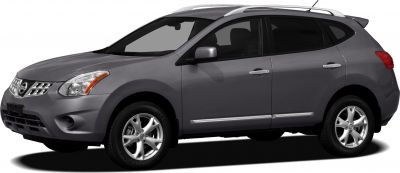
| Production: | 2011-2013 |
|---|---|
| Model Year: | 2011 |
| Length: | 4656 mm183.3 in |
| Width: | 1801 mm70.9 in |
| Height: | 1684 mm66.3 in |
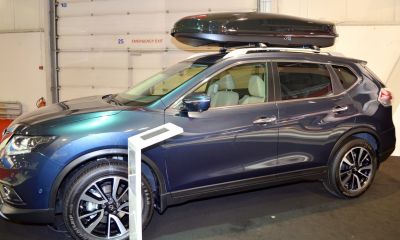
| Production: | 2014-2017 |
|---|---|
| Model Year: | 2014 |
| Length: | 4640 mm182.7 in |
| Width: | 1820 mm71.7 in |
| Height: | 1715 mm67.5 in |
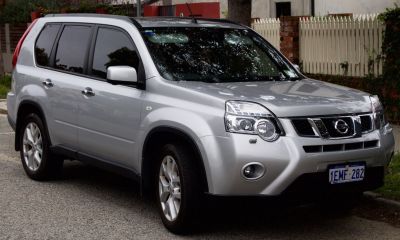
| Production: | 2010-2014 |
|---|---|
| Model Year: | 2010 |
| Length: | 4635 mm182.5 in |
| Width: | 1790 mm70.5 in |
| Height: | 1700 mm66.9 in |
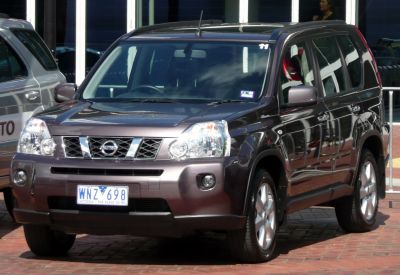
| Production: | 2007-2010 |
|---|---|
| Model Year: | 2007 |
| Length: | 4630 mm182.3 in |
| Width: | 1785 mm70.3 in |
| Height: | 1685 mm66.3 in |
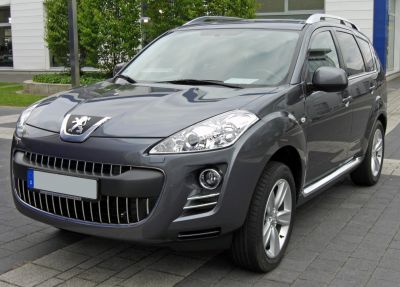
| Production: | 2007-2009 |
|---|---|
| Model Year: | 2007 |
| Length: | 4636 mm182.5 in |
| Width: | 1805 mm71.1 in |
| Height: | 1715 mm67.5 in |
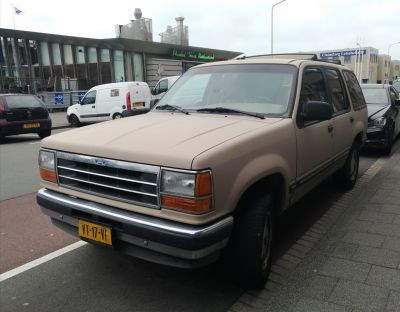
| Production: | 1991-1994 |
|---|---|
| Model Year: | 1991 |
| Length: | 4673 mm184.0 in |
| Width: | 1778 mm70.0 in |
| Height: | 1709 mm67.3 in |
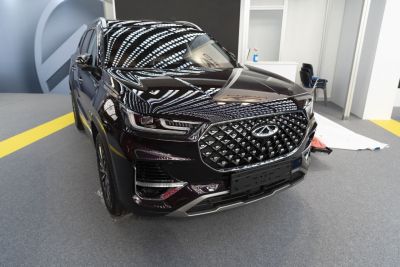
| Model Year: | 2020 |
|---|---|
| Length: | 4722 mm185.9 in |
| Width: | 1860 mm73.2 in |
| Height: | 1745 mm68.7 in |
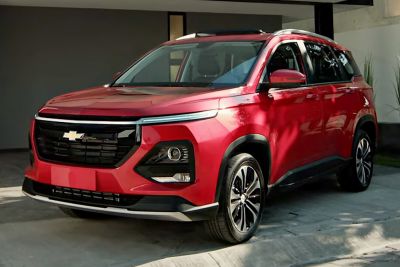
| Model Year: | 2022 |
|---|---|
| Length: | 4715 mm185.6 in |
| Width: | 1835 mm72.2 in |
| Height: | 1750 mm68.9 in |
